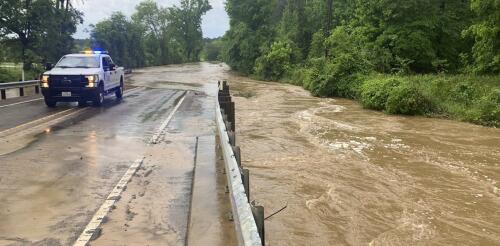Houston
Scenes from the Houston area looked like the aftermath of a hurricane in early May 2024 after a series of powerful storms flooded highways and neighborhoods and sent rivers over their banks north of the city. Hundreds of people had to be rescued from homes, rooftops and cars during storms, according to The Associated Press. Huntsville registered nearly 20 inches of rain from April 29 to May 4. More storm systems over the following weeks blew out windows in Houston high rises and caused more flash flooding on urban streets and already saturated ground in the region. Floods are complex events, and they are about more than just heavy rain. Each community has its own unique geography and climate that can exacerbate flooding. On top of those risks, extreme downpours are becoming more common as global temperatures rise. I work with a center at the University of Michigan that helps communities turn climate knowledge into projects that can reduce the harm of future climate disasters. F...
Most people associate hurricanes with high winds, intense rain and rapid flooding on land. But these storms can also change the chemistry of coastal waters. Such shifts are less visible than damage on land, but they can have dire consequences for marine life and coastal ocean ecosystems. We are oceanographers who study the effects of ocean acidification, including on organisms like oysters and corals. In a recent study, we examined how stormwater runoff from Hurricane Harvey in 2017 affected the water chemistry of Galveston Bay and the health of the bay’s oyster reefs. We wanted to understand how extreme rainfall and runoff from hurricanes influenced acidification of bay waters, and how long these changes could last. Our findings were startling. Hurricane Harvey, which generated massive rainfall in the Houston metropolitan area, delivered a huge pulse of fresh water into Galveston Bay. As a result, the bay was two to four times more acidic than normal for at least three...

